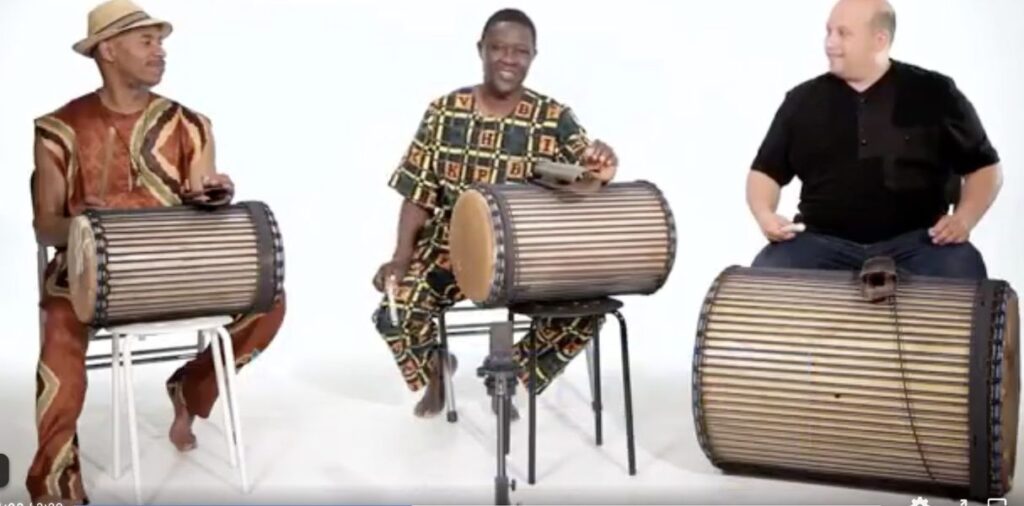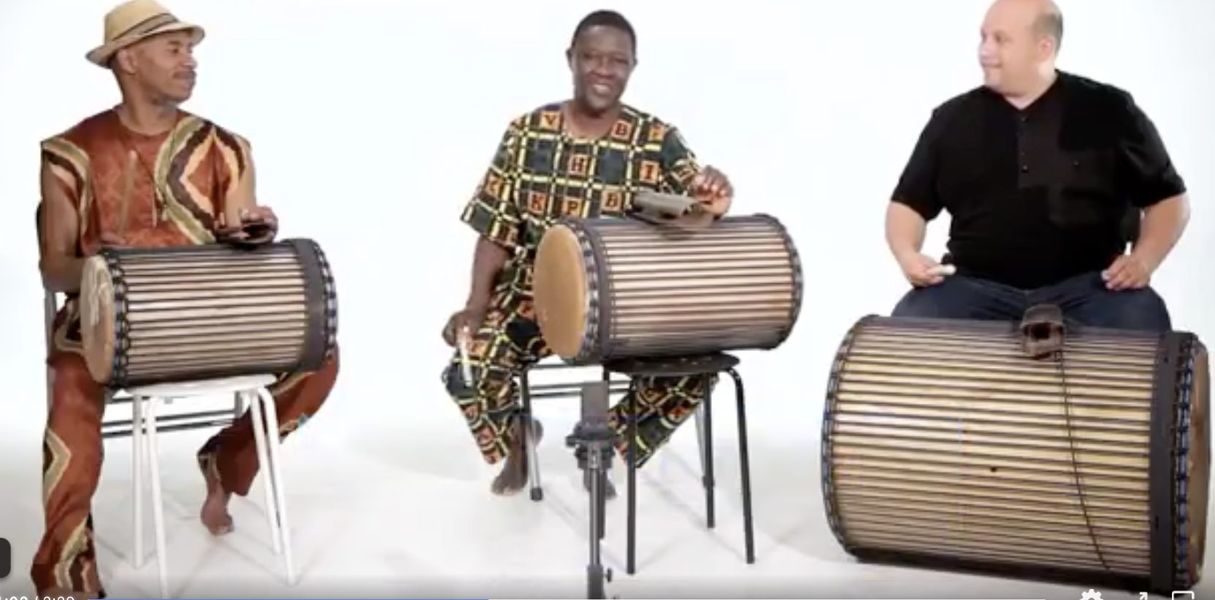With my new sound room in the condo we’re renting, I’ve been able to delve deeper into formal dunun studies and West African music, and I’m truly appreciative of this renewed focus.
As I’ve been playing the dunun more often, I’ve taken the time to revisit the individual playing styles, approaching each part one at a time. This practice has led me to a surprising discovery: despite my frequent performances in the ballet style, where all three parts are played simultaneously by one person, I seldom focus on playing each part separately alongside distinct musicians.
The double-sided bass drums that form the dunun ensemble offer a unique foundation for the djembe, acting as a metronome, melody, and bass. However, many musicians get caught up in playing only the djembe and often overlook this entire system.
Interestingly, yesterday, an old friend—a dance teacher and dunun player—reached out to me unexpectedly. Tonight, a Facebook friend revived a post from a decade ago, where I reflected on the notion that the more I progress, the more I realize how much I don’t know. It’s so cool how the universe works in mysterious ways to align things sometimes.

I thought I came here to connect and play with other people and it turns out just the opposite has happened it has given me a chance to go and look deeper inside and study further. I thought I wanted to perform, but this study practice has been so much more rewarding I have to admit it!
While I enjoy playing in the ballet style and plan to continue, I’m increasingly aware that the essence of djembe-dunun compositions resides in the blending and individualization of each part played separately, one person at a time.
This method breathes life into a composition, imbuing it with emotion and energy. It is truly a wonderful musical system.
My focus is shifting from performing and playing ballet style to reviving the individual dunun @in parts that various teachers have shared with me over the years.
With notes, notation, and videos to guide me, I’m rediscovering these pieces and reliving treasured memories. I remember the parts like it was yesterday. Yet something is completely different!
Watching the videos again is like seeing a beloved painting from a new perspective—I feel as though I’ve forgotten its beauty only to be struck by its subtleties once more.
This journey has made me realize that, regardless of my progress, I may never fully comprehend the material. I might memorize it or know how to piece it together, but ultimately, the material possesses a life of its own.
In my previous experiences playing Haitian music for numerous dance classes, performances and gatherings and prior to that Afro Cuban, I often found myself performing the same pieces with the same dancers and teachers.
Sometimes everything would click, and the music would resonate, connecting us deeply. The spirit would hit and it would be truly magical.
Yet on other occasions, it felt like I was merely going through the motions, puzzled about what had shifted or why the music felt so disconnected despite everyone playing correctly.
This ebb and flow highlights the dynamic and spiritual nature of music and enriches my appreciation for the journey I’m on.
I constantly remind myself to let go of ego, to shed expectations of others, and to release my own self-imposed standards.
I strive to do my best while honoring the tradition to the best of my ability. Having spent most of my life playing and studying drumming, keeping it all inside without sharing it doesn’t serve me. That’s why we are both here right now—you reading and I writing!

